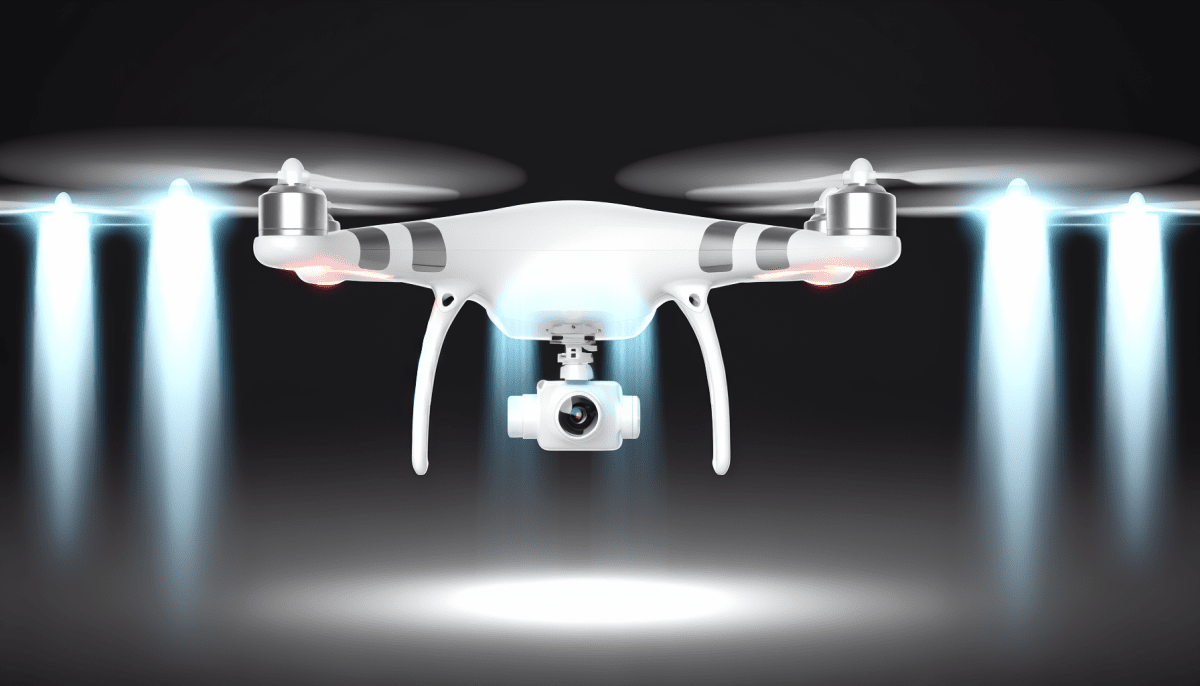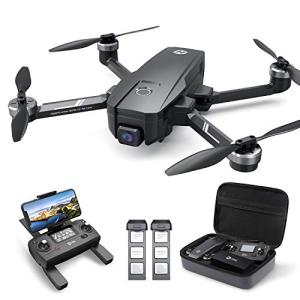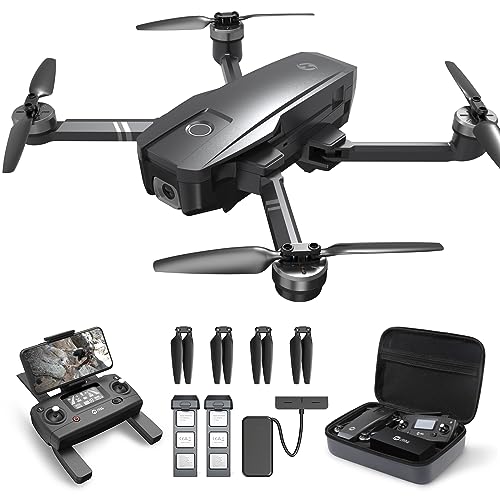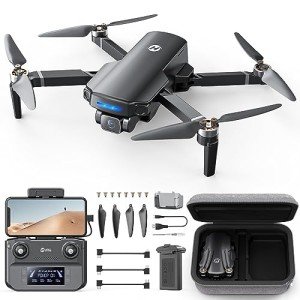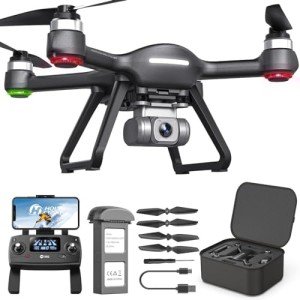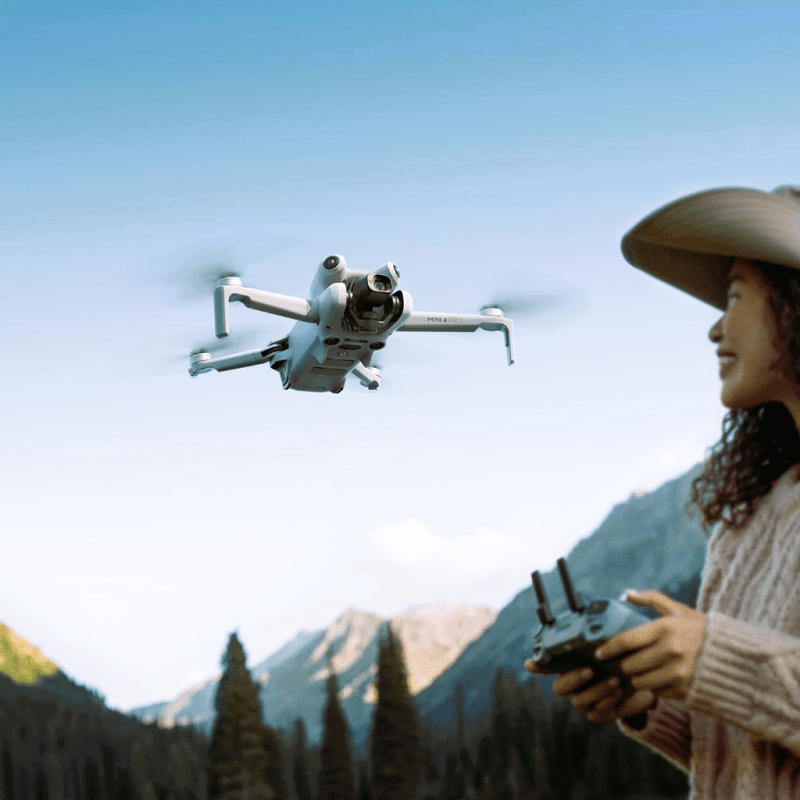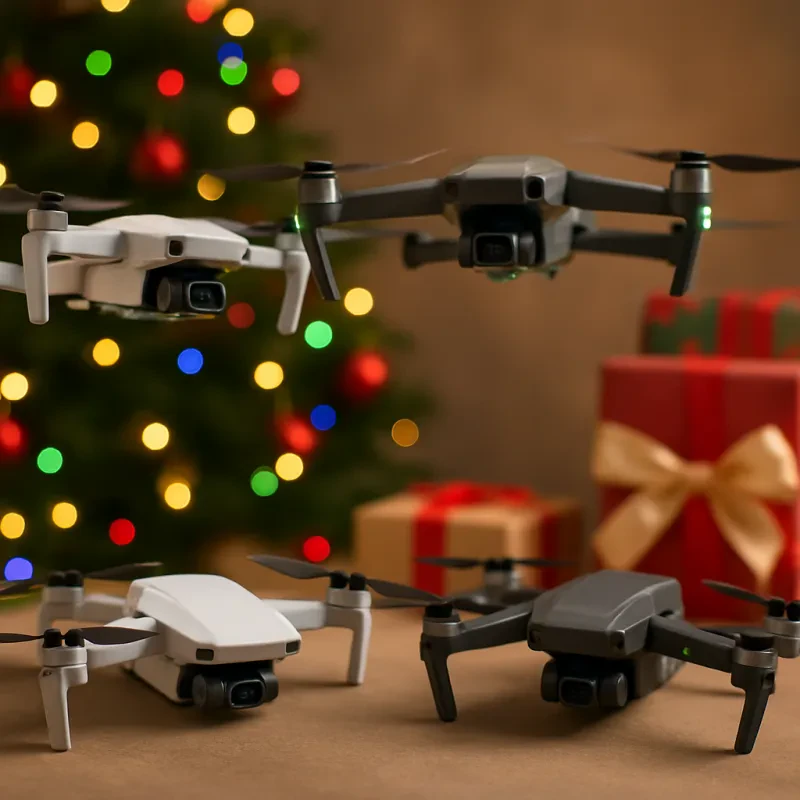Whether you are a tech enthusiast or just curious about the latest trends, drones have undoubtedly captured your attention. These unmanned aerial vehicles (UAVs) have become increasingly popular for both recreational and professional purposes. But with the plethora of options available, understanding the basics of drones is crucial before diving into the world of drone ownership.
3 Main Drone Components
It's vital to know that all drones consist of three main components: the drone itself, a controller or transmitter, and a device that displays the live video feed from the drone. The drone is the core component and usually equipped with propellers, a battery, and a camera. The controller serves as the communication hub between the drone and the pilot, allowing the operator to maneuver the drone in different directions. Plus, the live video feed device allows the pilot to observe the drone's flight and capture footage in real-time.
Drone Types and Purpose
Understanding the purpose of a drone is essential when choosing the best one for your needs. For beginners, recreational drones are ideal, as they are easy to fly and offer a great way to practice essential skills. These drones often come with built-in safety features, such as automatic return-to-home functions or obstacle avoidance systems. On the other hand, professional-grade drones are designed for commercial purposes like aerial photography, videography, agriculture or surveying. These drones are equipped with advanced features, longer flight times, further distances and higher-quality cameras.
Drone Rules and Regulations
It's also important to learn the rules and regulations regarding drone usage in your country and community before getting one. Many countries have specific regulations in place to ensure the safety of airspace and the privacy of individuals. It is crucial to familiarize yourself with these guidelines, such as obtaining licenses, maintaining a certain altitude, and avoiding restricted areas. By doing so, you can enjoy flying your drone responsibly and legally while avoiding any potential legal consequences. Here in the United States, visit Unmanned Aircraft Systems (UAS) | Federal Aviation Administration (faa.gov)
Choosing Your Perfect Drone: Factors to Consider
When it comes to picking the perfect drone, there are several important factors to consider. Drones have become increasingly popular in recent years, with a wide range of options available in the market. However, it can be overwhelming to choose the right one that suits your needs and preferences. To make the decision-making process easier for you, here are some essential factors to consider:
1. Purpose: Before purchasing a drone, determine the purpose for which you intend to use it. Drones are used for various activities, such as aerial photography, racing, videography, or simply for recreational flying. Understanding your purpose will help narrow down the options and find a drone that meets your specific requirements.
2. Budget: Set a budget based on how much you are willing to spend on a drone. Drones come in different price ranges, and the more features and capabilities they offer, the higher the price. Determine your budget beforehand to avoid overspending or regretting a purchase.
3. Size and Portability: Consider the size and portability of the drone. If you plan to travel with it or need to carry it around often, a compact and lightweight drone is preferable. However, if you prioritize stability and longer flight times, larger drones may be more suitable. Evaluate your needs and preferences for size and portability.
Taking Flight: Exploring Different Types of Drones
- Introduction
- Quadcopters: Versatile and Popular
- Fixed-Wing Drones: Efficiency and Long Flight Time
- Hexacopters and Octocopters: Enhanced Stability
Introduction
As drones continue to soar in popularity, it can be overwhelming to choose the best one for your needs. With a wide variety of options available, each designed for specific purposes, understanding the different types of drones is essential. This article aims to decode the world of drones and guide you towards picking the perfect flying machine.
Quadcopters: Versatile and Popular
Quadcopters, equipped with four propellers, are the most common and versatile type of consumer drone. These drones are known for their stability, agility, and ease of control. The symmetrical design of quadcopters allows them to hover accurately and change directions swiftly. Their compact size and maneuverability make them suitable for various activities, such as aerial photography, racing, and recreational flying. Additionally, quadcopters are usually equipped with features like GPS, altitude hold, and obstacle avoidance, ensuring a safe and enjoyable flight experience.
Fixed-Wing Drones: Efficiency and Long Flight Time
Fixed-wing drones, resembling miniature airplanes, differ from quadcopters in their flight mechanism. Rather than relying on rotors for lift, these drones generate lift through the shape of their wings. Fixed-wing drones offer several advantages, including efficient and longer flight times. With their ability to glide and soar without using much power, they are ideal for aerial mapping, surveying large areas, and industrial purposes. However, they require more space for taking off and landing compared to quadcopters.
Hexacopters and Octocopters: Enhanced Stability
Hexacopters and octocopters, featuring six and eight rotors respectively, provide enhanced stability and redundancy compared to quadcopters. The additional rotors increase lift capacity and improve flight performance, making them an excellent choice for carrying heavier payloads, capturing professional-grade aerial footage, and conducting surveillance or inspection tasks. The redundancy factor means these drones can continue flying even if one or more motors fail, which enhances safety and reliability. However, hexacopters and octocopters can be more complex to operate and require advanced piloting skills.
Mastering the Skies: Tips for Becoming a Skilled Drone Pilot
Drones have revolutionized the way we capture aerial footage, opening up a whole new world of possibilities for photographers and videographers. Whether you are a beginner looking to take your first flight or an experienced pilot wanting to sharpen your skills, here are some essential tips to help you become a skilled drone pilot.
1. Start with a Beginner-Friendly Drone: If you are new to drones, it's essential to begin with a model that is easy to fly and has built-in safety features such as obstacle avoidance and GPS stabilization. Starting with a beginner-friendly drone will help you gain confidence and develop basic flight skills before moving on to more advanced models.
2. Learn the Flight Controls: Familiarize yourself with the drone's flight controls, including throttle, yaw, pitch, and roll. Practice flying in different directions and maneuvers, such as hovering, ascending, descending, and turning. Understanding how to control your drone effectively will allow you to capture smooth and precise shots.
3. Know the Rules and Regulations: Before taking to the skies, make sure to familiarize yourself with the local rules and regulations regarding drone usage. Understand restrictions on where you can fly, altitude limits, and any necessary permits or licenses required. Adhering to the rules will ensure a safe and legal flying experience.
